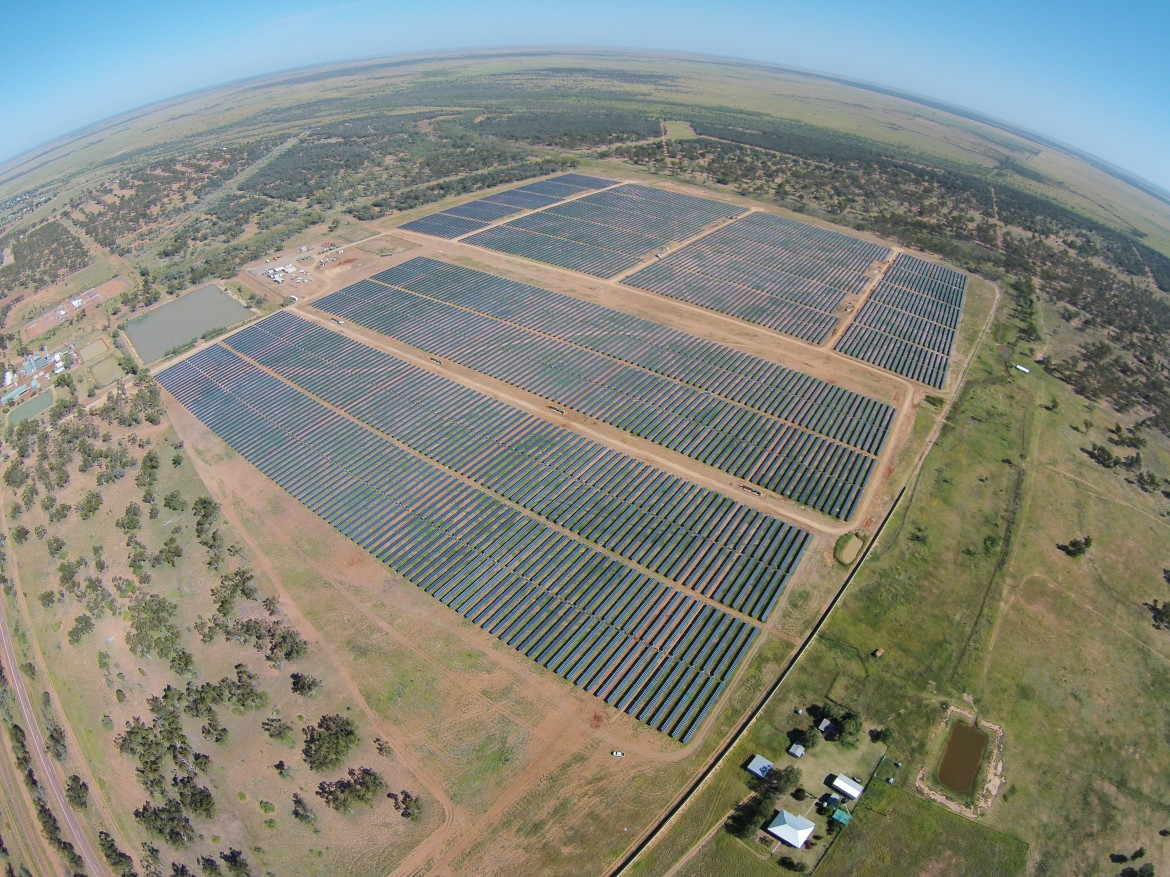Renewable energy supplied more than a quarter of the National Electricity Market (NEM) last month, exceeding the previous record set one month earlier.
According to the National Energy and Emissions Audit published by The Australian Institute, the total renewable share of all electricity supplied in August, including rooftop solar, rose to 25.6%.
In the year to July 2018, the share of grid renewables in the NEM, including rooftop solar, beat the previous record share, which occurred in early 2014, during the closing months of the carbon price period, reaching 19,7%, the report shows.
The trend is expected to continue, as confirmed by official figured from the Energy Security Board, suggesting that by the end of 2020 total wind generation capacity connected to the NEM will be 41% higher than today and total solar connected will be almost three times current capacity.
This surge of renewables on the grid is expected to drive down wholesale electricity prices, contradicting repeated claims by conservative MPs that renewables are behind electricity price increases experienced in recent years.
In the light of the accelerated rates of new capacity connection during the past six months, particularly for solar farms, the report reads: “It is ironic, or perhaps symbolic, that these dramatic changes are so clearly demonstrating the success of policy in place since 2009, with a 2020 completion date, in the same month that the government finally abandoned any attempt to design energy and emissions policy to follow on through the 2020s.”
The Australia Institute’s expectation of falling power prices aligns with a recent report by Green Energy Markets, which says the addition of 7,200 MW of large-scale renewable energy supply since the closure of coal-fired power plants in 2016 is expected to almost halve wholesale electricity price over the next four years.
The new report further shows that the states with the highest clean energy share, South Australia and Victoria, had the lowest wholesale prices.
South Australia, in particular, sourced 58% of power from renewables including rooftop solar, while its wholesale prices were lowest last month at $72/MWh, followed by $79/MWh in Victoria, $82 per MWh in Queensland and $93 per MWh in New South Wales.
“On most days during July and, particularly, August, average spot wholesale prices [in SA] were at or below the levels seen in the other mainland states,” the report reads.
Despite mounting evidence of the benefits of renewables uptake, the Morrison government continues to talk about underwriting new coal-fired power generation, with Energy Minister Angus Taylor claiming that ambitious emissions targets, such as the one in SA, are driving up prices of electricity.
“Regrettably, it appears that the current government has no policy to address the serious task of, in the words of AEMO’s Statement of Opportunities, ensuring the construction after 2020 of “new utility-scale renewable generation…complemented by storage, distributed energy resources (DER), flexible thermal capacity, and transmission”,” the report reads.
But, while officials often appear ill-informed about emissions reduction and renewable share targets, the nation is concerned about the impacts of climate change.
According to another recent report by The Australia Institute, 70% of Australians agree that the Government needs to implement a plan to ensure the orderly closure of old coal plants and their replacement with clean energy.
A total of 67% of Australians want to end coal-fired power within the next 20 years, while 68% support State Governments putting in place incentives for renewable energy.
Only 29% share the opinion of the Energy Minister and blame renewable energy for increasing electricity prices.
This content is protected by copyright and may not be reused. If you want to cooperate with us and would like to reuse some of our content, please contact: editors@pv-magazine.com.









1 comment
By submitting this form you agree to pv magazine using your data for the purposes of publishing your comment.
Your personal data will only be disclosed or otherwise transmitted to third parties for the purposes of spam filtering or if this is necessary for technical maintenance of the website. Any other transfer to third parties will not take place unless this is justified on the basis of applicable data protection regulations or if pv magazine is legally obliged to do so.
You may revoke this consent at any time with effect for the future, in which case your personal data will be deleted immediately. Otherwise, your data will be deleted if pv magazine has processed your request or the purpose of data storage is fulfilled.
Further information on data privacy can be found in our Data Protection Policy.